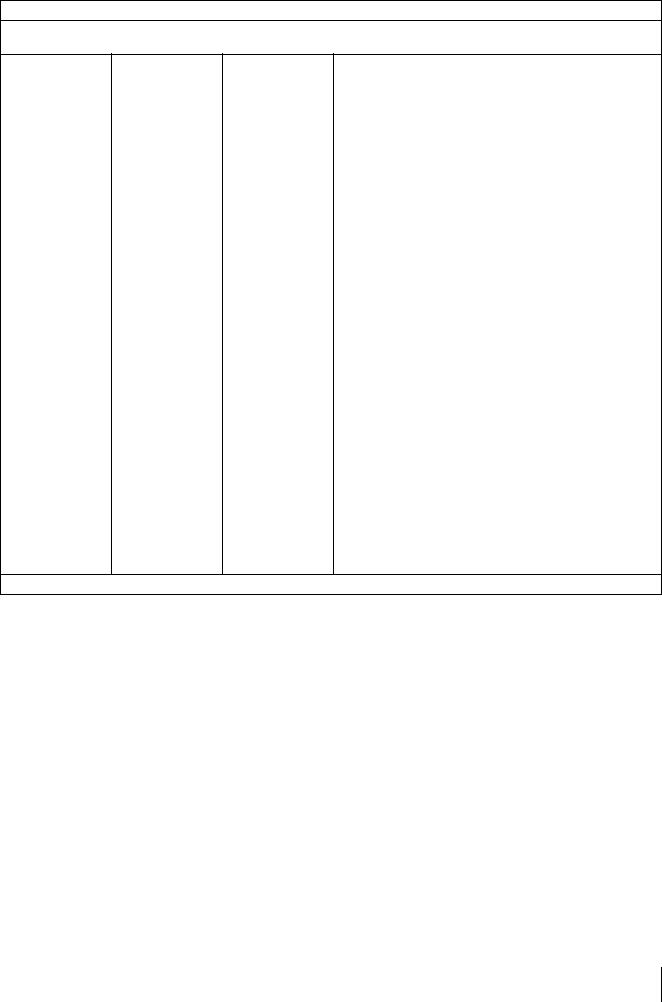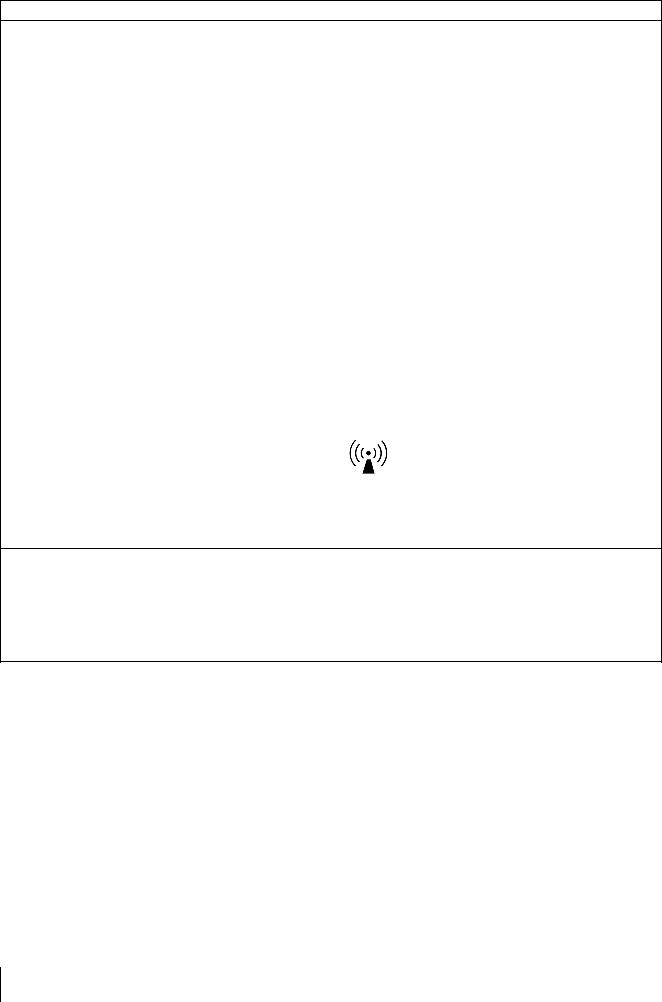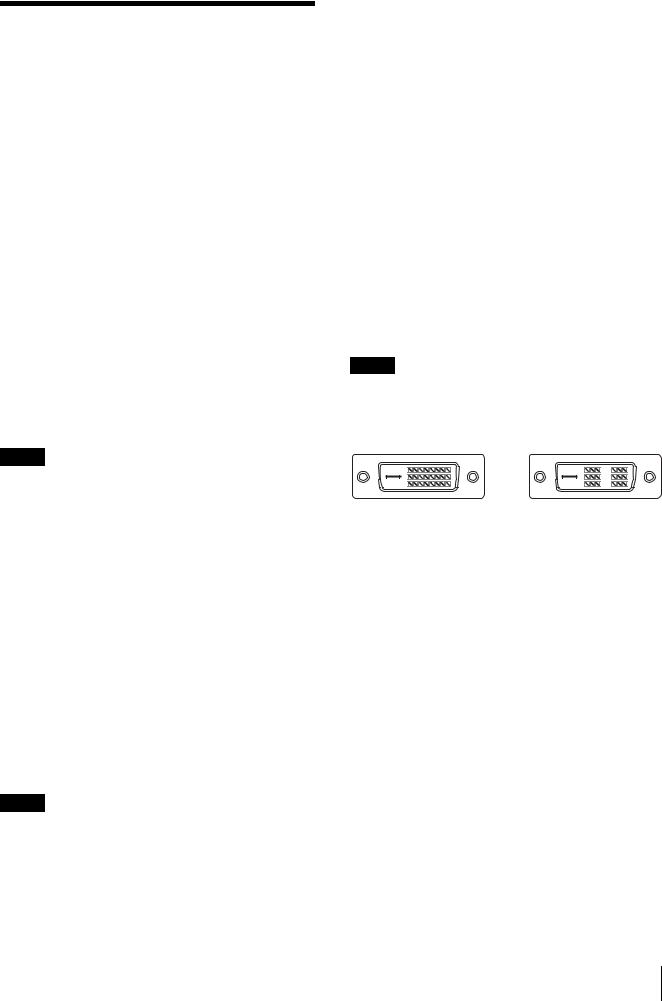Sony LMD-DM50, LMD-DM20, LMD-DM30 User Manual

 4-421-015-11 (1)
4-421-015-11 (1)
LCD Display
Instructions for Use
Before operating the unit, please read this manual thoroughly and retain it for future reference.
LMD-DM50
LMD-DM30
LMD-DM20
© 2012 Sony Corporation

Owner’s Record
The model and serial numbers are located at the rear. Record these numbers in the spaces provided below. Refer to these numbers whenever you call upon your Sony dealer regarding this product.
Model No. ____________________
Serial No. ____________________
WARNING
To reduce the risk of fire or electric shock, do not expose this apparatus to rain or moisture.
To avoid electrical shock, do not open the cabinet. Refer servicing to qualified personnel only.
No modification of this apparatus is allowed.
WARNING
THIS APPARATUS MUST BE EARTHED.
To disconnect the main power, unplug the AC plug.
WARNING
When installing the unit, incorporate a readily accessible disconnect device in the fixed wiring, or connect the power plug to an easily accessible socketoutlet near the unit. If a fault should occur during operation of the unit, operate the disconnect device to switch the power supply off, or disconnect the power plug.
WARNING
Make sure the surface is wide enough so that this apparatus’s width and depth don’t exceed the surface’s edges.
If not, this apparatus may lean or fall over and cause an injury.
For the customers in the U.S.A.
This equipment has been tested and found to comply with the limits for a Class B digital device, pursuant to Part 15 of the FCC Rules. These limits are designed to provide reasonable protection against harmful interference in a residential installation. This equipment generates, uses, and can radiate radio frequency energy and, if not installed and used in accordance with the instructions, may cause harmful interference to radio communications. However, there is no guarantee that interference will not occur in a particular installation. If this equipment does cause harmful interference to radio or television reception, which can be determined by turning the equipment off and on, the user is encouraged to try to correct the interference by one or more of the following measures:
-Reorient or relocate the receiving antenna.
-Increase the separation between the equipment and receiver.
-Connect the equipment into an outlet on a circuit different from that to which the receiver is connected.
-Consult the dealer or an experienced radio/TV technician for help.
You are cautioned that any changes or modifications not expressly approved in this manual could void your authority to operate this equipment.
All interface cables used to connect peripherals must be shielded in order to comply with the limits for a digital device pursuant to Subpart B of Part 15 of FCC Rules.
If you have any questions about this product, you may call;
Sony Customer Information Service Center 1-800-222- 7669 or http://www.sony.com/
Declaration of Conformity
Trade Name |
: SONY |
Model |
: LMD-DM50/DM30/DM20 |
Responsible party |
: Sony Electronics Inc. |
Address |
: 16530 Via Esprillo, San Diego, |
|
CA 92127 U.S.A. |
Telephone Number : 858-942-2230
This device complies with part 15 of the FCC Rules. Operation is subject to the following two conditions:
(1) this device may not cause harmful interference, and (2) this device must accept any interference received, including interference that may cause undesired operation.
WARNING:
Using this unit at a voltage other than 120 V may require the use of a different line cord or attachment plug, or both. To reduce the risk of fire or electric shock, refer servicing to qualified service personnel.
For the customers in Canada
This Class B digital apparatus complies with Canadian ICES-003.
For the customers in Canada
This unit has been certified according to Standard CSA C22.2 No.601.1.
For the customers in the U.S.A and Canada
When you use this product connected to 240 V single phase, be sure to connect this product to a center tapped circuit.
2

For the customers in Europe
The manufacturer of this product is Sony Corporation, 1-7-1 Konan, Minato-ku, Tokyo, 108-0075 Japan. The Authorized Representative for EMC and product
safety is Sony Deutschland GmbH, Hedelfinger Strasse 61, 70327 Stuttgart, Germany. For any service or guarantee matters please refer to the addresses given in separate service or guarantee documents.
Important safeguards/notices for use in the medical environments
1.All the equipments connected to this unit shall be certified according to Standard IEC60601-1, IEC60950-1, IEC60065 or other IEC/ISO Standards applicable to the equipments.
2.Furthermore all configurations shall comply with the system standard IEC60601-1-1. Everybody who connects additional equipment to the signal input part or signal output part configures a medical system, and is therefore, responsible that the system complies with the requirements of the system standard IEC60601-1-1.
If in doubt, consult the qualified service personnel.
3.The leakage current could increase when connected to other equipment.
4.For this particular equipment, all accessory equipment connected as noted above, must be connected to mains via an additional isolation transformer conforming with the construction requirements of IEC60601-1 and providing at least Basic Insulation.
5.This equipment generates, uses, and can radiate radio frequency energy. If it is not installed and used in accordance with the instruction manual, it may cause interference to other equipment. If this unit causes interference (which can be determined by unplugging the power cord from the unit), try these measures: Relocate the unit with respect to the susceptible equipment. Plug this unit and the susceptible equipment into different branch circuit.
Consult your dealer. (According to standard EN60601- 1-2 and CISPR11, Class B, Group 1)
Caution
When you dispose of the unit or accessories, you must obey the laws in the relative area or country and the regulations in the relative hospital.
For the customers in the USA
Lamp in this product contains mercury. Disposal of these materials may be regulated due to environmental considerations. For disposal or recycling information, please contact your local authorities or the Telecommunications Industry Association (www.eiae.org).
WARNING on power connection
Use a proper power cord for your local power supply.
1.Use the approved Power Cord (3-core mains lead) / Appliance Connector / Plug with earthing-contacts that conforms to the safety regulations of each country if applicable.
2.Use the Power Cord (3-core mains lead) / Appliance Connector / Plug conforming to the proper ratings (Voltage, Ampere).
If you have questions on the use of the above Power Cord / Appliance Connector / Plug, please consult a qualified service personnel.
WARNING on power connection for medical use
Please use the following power supply cord. With connectors (plug or female) and cord types other than those indicated in this table, use the power supply cord that is approved for use in your area.
|
United States and Canada |
|
|
Plug Type |
HOSPITAL GRADE* |
|
|
Cord Type |
Min. Type SJT |
|
Min. 18 AWG |
|
|
Minimum Rating |
10A/125V |
for Plug and |
|
Appliance |
|
Couplers |
|
Safety Approval |
UL Listed and CSA |
|
|
*Note: Grounding reliability can only be achieved when the equipment is connected to an equivalent receptacle marked ‘Hospital Only’ or ‘Hospital Grade’.
Symbols on the unit
This symbol indicates the manufacturer, and appears next to the manufacturer’s name and address.
Refer to the operating instructions
Follow the directions in the operating instructions for parts of the unit on which this mark appears.
3

Important EMC notices for use in the medical environments
•The LMD-DM50/DM30/DM20 needs special precautions regarding EMC and needs to be installed and put into service according to the EMC information provided in this instructions for use.
•The portable and mobile RF communications equipment such as cellular phones can affect the LMD-DM50/DM30/DM20.
Warning
The use of accessories and cables other than those specified, with the exception of replacement parts sold by Sony Corporation, may result in increased emissions or decreased immunity of the LMD-DM50/DM30/ DM20.
Guidance and manufacturer’s declaration-electromagnetic emissions
The LMD-DM50/DM30/DM20 is intended for use in the electromagnetic environment specified below.
The customer or the user of the LMD-DM50/DM30/DM20 should assure that it is used in such an environment.
Emission test |
Compliance |
Electromagnetic environment-guidance |
|
|
|
|
|
RF emissions |
|
The LMD-DM50/DM30/DM20 uses RF energy only for its |
|
|
Group 1 |
internal function. Therefore, its RF emissions are very low and |
|
CISPR 11 |
are not likely to cause any interference in nearby electronic |
||
|
|||
|
|
equipment. |
|
|
|
|
|
RF emissions |
|
The LMD-DM50/DM30/DM20 is suitable for use in all |
|
|
Class B |
establishments, including domestic establishments and those |
|
CISPR 11 |
|
directly connected to the public low-voltage power supply |
|
|
|
network that supplies buildings used for domestic purposes. |
|
Harmonic emissions |
|
||
|
|
||
|
Class D |
|
|
IEC 61000-3-2 |
|
|
|
|
|
|
|
Voltage fluctuations/ |
|
|
|
flicker emissions |
Complies |
|
|
|
|
||
IEC 61000-3-3 |
|
|
|
|
|
|
Warning
If the LMD-DM50/DM30/DM20 should be used adjacent to or stacked with other equipment, it should be observed to verify normal operation in the configuration in which it will be used.
4

Guidance and manufacturer’s declaration - electromagnetic immunity
The LMD-DM50/DM30/DM20 is intended for use in the electromagnetic environment specified below. The customer or the user of the LMD-DM50/DM30/DM20 should assure that it is used in such as environment.
Immunity test |
IEC 60601 test |
Compliance level |
Electromagnetic environment - guidance |
|
level |
||||
|
|
|
||
|
|
|
|
|
Electrostatic |
±6 kV contact |
±6 kV contact |
Floors should be wood, concrete or ceramic tile. If floors are |
|
discharge (ESD) |
|
|
covered with synthetic material, the relative humidity should be |
|
|
±8 kV air |
±8 kV air |
at least 30%. |
|
IEC 61000-4-2 |
|
|
|
|
|
|
|
|
|
Electrical fast |
±2 kV for power |
±2 kV for power |
Mains power quality should be that of a typical commercial or |
|
transient/burst |
supply lines |
supply lines |
hospital environment. |
|
IEC 61000-4-4 |
±1 kV for input/ |
±1 kV for input/ |
|
|
|
output lines |
output lines |
|
|
|
|
|
|
|
Surge |
±1 kV differential |
±1 kV differential |
Mains power quality should be that of a typical commercial or |
|
|
mode |
mode |
hospital environment. |
|
IEC 61000-4-5 |
|
|
|
|
|
±2 kV common |
±2 kV common |
|
|
|
mode |
mode |
|
|
|
|
|
|
|
Voltage dips, short |
< 5% UT |
< 5% UT |
Mains power quality should be that of a typical commercial or |
|
interruptions and |
(> 95% dip in UT) |
(> 95% dip in UT) |
hospital environment. If the user of the LMD-DM50/DM30/ |
|
voltage variations |
for 0.5 cycle |
for 0.5 cycle |
DM20 requires continued operation during power mains |
|
on power supply |
|
|
interruptions, it is recommended that the LMD-DM50/DM30/ |
|
input lines |
40% UT |
40% UT |
DM20 be powered from an uninterruptible power supply or a |
|
IEC 61000-4-11 |
(60% dip in UT) |
(60% dip in UT) |
battery. |
|
for 5 cycles |
for 5 cycles |
|
||
|
70% UT |
70% UT |
|
|
|
(30% dip in UT) |
(30% dip in UT) |
|
|
|
for 25 cycles |
for 25 cycles |
|
|
|
< 5% UT |
< 5% UT |
|
|
|
(> 95% dip in UT) |
(> 95% dip in UT) |
|
|
|
for 5 sec |
for 5 sec |
|
|
|
|
|
|
|
Power frequency |
3 A/m |
3 A/m |
Power frequency magnetic fields should be at least characteristic |
|
(50/60Hz) |
|
|
of a typical location in a typical commercial or hospital |
|
magnetic field |
|
|
environment. |
IEC 61000-4-8
NOTE: UT is the a.c. mains voltage prior to application of the test level.
5

Guidance and manufacturer’s declaration - electromagnetic immunity
The LMD-DM50/DM30/DM20 is intended for use in the electromagnetic environment specified below. The customer or the user of the LMD-DM50/DM30/DM20 should assure that it is used in such as environment.
Immunity test |
IEC 60601 test |
Compliance level |
Electromagnetic environment - guidance |
|
level |
||||
|
|
|
||
|
|
|
|
|
|
|
|
Portable and mobile RF communications equipment should be |
|
|
|
|
used no closer to any part of the LMD-DM50/DM30/DM20, |
|
|
|
|
including cables, than the recommended separation distance |
|
|
|
|
calculated from the equation appliance to the frequency of the |
|
|
|
|
transmitter. |
|
|
|
|
Recommended separation distance |
|
Conducted RF |
3 Vrms |
3 Vrms |
d = 1.2 √P |
|
|
|
|
||
IEC 61000-4-6 |
150 kHz to 80 MHz |
|
d = 1.2 √P 80 MHz to 800 MHz |
|
|
|
|
||
|
|
|
d = 2.3 √P 800 MHz to 2.5 GHz |
|
Radiated RF |
3 V/m |
3 V/m |
|
|
|
|
|
Where P is the maximum output power rating of the transmitter |
|
IEC 61000-4-3 |
80 MHz to 2.5 GHz |
|
in watts (W) according to the transmitter manufacturer and d is |
|
|
|
|
the recommended separation distance in meters (m). |
|
|
|
|
Field strengths from fixed RF transmitters, as determined by an |
|
|
|
|
electromagnetic site survey, a should be less than the compliance |
|
|
|
|
level in each frequency range. b |
|
|
|
|
Interference may occur in the vicinity of equipment marked with |
|
|
|
|
following symbol: |
|
|
|
|
|
NOTE 1: At 80 MHz and 800 MHz, the higher frequency range applies.
NOTE 2: These guidelines may not apply in all situations. Electromagnetic propagation is affected by absorption and reflection from structures, objects and people.
aField strengths from fixed transmitters, such as base stations for radio (cellular/cordless) telephones and land mobile radios, amateur radio, AM and FM radio broadcast and TV broadcast cannot be predicted theoretically with accuracy. To assess the electromagnetic environment due to fixed RF transmitters, an electromagnetic site survey should be considered. If the measured field strength in the location in which the LMD-DM50/DM30/DM20 is used exceeds the applicable RF compliance level above, the LMD-DM50/DM30/ DM20 should be observed to verify normal operation. If abnormal performance is observed, additional measures may be necessary, such as reorienting or relocating the LMD-DM50/DM30/DM20.
bOver the frequency range 150 kHz to 80 MHz, field strengths should be less than 3 V/m.
6

Recommended separation distances between portable and mobile RF communications equipment and the LMDDM50/DM30/DM20
The LMD-DM50/DM30/DM20 is intended for use in an electromagnetic environment in which radiated RF disturbances are controlled. The customer or the user of the LMD-DM50/DM30/DM20 can help prevent electromagnetic interference by maintaining a minimum distance between portable and mobile RF communications equipment (Transmitters) and the LMD-DM50/DM30/DM20 as recommended below, according to the maximum output power of the communications equipment.
Rated maximum output power of transmitter |
Separation distance according to frequency of transmitter |
||
W |
|
m |
|
|
|
|
|
|
150 kHz to 80 MHz |
80 MHz to 800 MHz |
800 MHz to 2.5 GHz |
|
d = 1.2 √P |
d = 1.2 √P |
d = 2.3 √P |
|
|
|
|
0.01 |
0.12 |
0.12 |
0.23 |
|
|
|
|
0.1 |
0.38 |
0.38 |
0.73 |
|
|
|
|
1 |
1.2 |
1.2 |
2.3 |
|
|
|
|
10 |
3.8 |
3.8 |
7.3 |
|
|
|
|
100 |
12 |
12 |
23 |
|
|
|
|
For transmitters rated a maximum output power not listed above, the recommended separation distance d in meters (m) can be estimated using the equation applicable to the frequency of the transmitter, where P is the maximum output power rating of the transmitter in watts (W) according to the transmitter manufacturer.
NOTE 1: At 80 MHz and 800 MHz, the separation distance for the higher frequency range applies.
NOTE 2: These guidelines may not apply in all situations. Electromagnetic propagation is affected by absorption and reflection from structures, objects and people.
7

Table of Contents |
|
Precaution .............................................................. |
9 |
On Safety ............................................................ |
9 |
On Installation .................................................... |
9 |
About the LCD Panel ......................................... |
9 |
Protective Filter .................................................. |
9 |
On Burn-in ......................................................... |
9 |
On Long Periods of Use ................................... |
10 |
On Cleaning ..................................................... |
10 |
Disposal of the Unit ......................................... |
10 |
Recommendation to Use More Than |
|
One Unit ......................................................... |
10 |
On Repacking ................................................... |
10 |
On Moisture Condensation .............................. |
10 |
Having the Unit Periodically Cleaned ............. |
10 |
Features ................................................................ |
11 |
Utility Software ................................................ |
12 |
Location and Function of Parts and |
|
Controls ................................................................ |
13 |
Front Panel ....................................................... |
13 |
Rear Panel ........................................................ |
14 |
Adjusting the Stand Height ................................ |
15 |
Removing the Connector Cover ......................... |
16 |
Connecting the Cables ........................................ |
16 |
Routing the Cables .............................................. |
17 |
Adjusting the LCD Panel Angle ......................... |
18 |
Switching the LCD Panel Orientation ............... |
18 |
Displaying the Information Screen .................... |
19 |
Changing the Display Setting ............................. |
20 |
Fixing the Display Orientation ......................... |
20 |
Switching the Display Mode ............................ |
21 |
Switching the Input Source .............................. |
22 |
Switching Configuration Data ......................... |
23 |
Operating the Menu with No Image Input ....... |
24 |
Using a USB Hub ................................................. |
25 |
Connector Pin Assignment ................................. |
26 |
Troubleshooting ................................................... |
28 |
Attaching an Arm Stand ..................................... |
29 |
Anti-Theft Security Slot ...................................... |
30 |
Specifications ....................................................... |
30 |
Dimensions ........................................................... |
32 |
8 Table of Contents

Precaution
On Safety
•Operate the unit only with a power source as specified in the “Specifications” section.
•A nameplate indicating operating voltage, etc., is located on the rear panel.
•Should any solid object or liquid fall into the cabinet, unplug the unit and have it checked by qualified personnel before operating it any further.
•Do not drop or place heavy objects on the power cord. If the power cord is damaged, turn off the power immediately. It is dangerous to use the unit with a damaged power cord.
•Unplug the unit from the wall outlet if it is not to be used for several days or more.
•Disconnect the power cord from the AC outlet by grasping the plug, not by pulling the cord.
•The socket-outlet shall be installed near the equipment and shall be easily accessible.
On Installation
•The LCD panel can be used in portrait or landscape orientation. Make the appropriate settings for display orientation on your computer.
•Prevent internal heat build-up by allowing adequate air circulation.
Do not place the unit on surfaces (rugs, blankets, etc.) or near materials (curtains, draperies) that may block the ventilation holes.
•Do not install the unit near heat sources such as radiators or air ducts, or in a place subject to direct sunlight, excessive dust, mechanical vibration or shock.
•Do not place the unit near equipment which generates magnetism, such as a transformer or high voltage power lines.
About the LCD Panel
•The LCD panel fitted to this unit is manufactured with high precision technology, giving a functioning pixel ratio of at least 99.99%. Thus a very small proportion of pixels may be “stuck”, either always off (black), always on or flashing. In addition, over a long period of use, because of the physical characteristics of the liquid crystal display, such “stuck” pixels may appear spontaneously. This is not a malfunction.
•Do not leave the LCD screen facing the sun as it can damage the LCD screen. Take care when you place the unit by a window.
•Do not push or scratch the LCD screen. Do not place a heavy object on the LCD screen. This may cause the screen to lose uniformity.
•If the unit is used in a cold place, a residual image may appear on the screen. This is not a malfunction. When the unit becomes warm, the screen returns to normal.
•The screen and the cabinet become warm during operation. This is not a malfunction.
Even if it is used properly, the unit may cause harmful interference to radio or television reception. Try the following measures to correct it.
•Increase the distance between the unit and the radio/ TV.
•Connect the unit to a different outlet from the one to which the radio/TV is connected.
Protective Filter
The LCD panel comes with an anti-reflection-coated protective filter. The surface is very delicate. Do not rub or hit with hard objects.
On Burn-in
Permanent burn-in may occur if still images are displayed in the same position on the LCD panel continuously, or repeatedly over extended periods.
Images that may cause burn-in
•Images that remain static for a long time
•Character or message displays that indicate settings or operating state
To reduce the risk of burn-in
•Turn on the screensaver function
Turn on the screensaver or enable the standby mode to avoid permanent burn-in of an image displayed for an extended period on the LCD panel.
•Turn off the power when not in use
Turn off the power if the unit is not to be used for an extended period of time.
Precaution 9

On Long Periods of Use
Due to the characteristics of the LCD panel, displaying static images for extended periods, or using the unit repeatedly in high temperature/high humidity environments may cause image smearing, burn-in, areas of which brightness is permanently changed, lines, or a decrease in overall brightness.
In particular, continued display of an image smaller than the screen, such as in a different aspect ratio, may shorten the life of the unit.
Avoid displaying a still image for an extended period, or using the unit repeatedly in a high temperature/high humidity environment such an airtight room, or around the outlet of an air conditioner.
To prevent any of the above issues, we recommend to turn off the power whenever the unit is not in use.
On Cleaning
•When cleaning the unit, remove the AC power cord from the unit and the wall outlet for your safety.
•Wipe off dust on the unit surface with a soft cloth. Dampen it lightly in mild soap solution to wipe off grease.
•Do not spray insecticides and other volatile solutions on the unit surface. Do not keep rubber or vinyl in contact with the cabinet for a long time. It could damage the unit surface and/or the coating could come off.
•The unit is made of plastic and coated metal plate. Never use solvents such as benzene or thinner, or acid, alkaline or abrasive detergent, or a chemical cleaning cloth for cleaning or disinfection, as they may damage the unit surface.
•Be careful when handling the LCD panel (protective filter). The surface is very delicate. Do not rub or hit with hard objects.
Disposal of the Unit
•Do not dispose of the unit with general waste. Do not include the unit with household waste.
•The fluorescent tube includes mercury. Dispose of the unit in accordance with the regulations of your local sanitation authority.
Recommendation to Use More Than One Unit
As problems can occasionally occur with the unit, if it is used for safety control of personnel, assets or stable picture, or for emergencies, we strongly recommend you use more than one unit, or have a spare unit available.
On Repacking
Do not throw away the carton and packing materials. They make an ideal container by which to transport the unit.
If you have any questions about this unit, contact your authorized Sony dealer.
On Moisture Condensation
If the unit is brought directly from a cold place to a warm place, or the unit is warm and the ambient temperature cools suddenly (by air-conditioning, for example), moisture may condense on the surface or inside of the unit.
This is called moisture condensation, and is not a malfunction of the product itself, although it may cause damage to the unit.
Leave the unit in a condensation free area.
If moisture condensation has occurred, turn off the unit and do not use it until moisture condensation has evaporated.
Having the Unit Periodically
Cleaned
If the unit is not cleaned for long periods, dust accumulation inside the unit may cause fire or electric shock.
Have an authorized Sony dealer clean the unit’s interior at least once a year.
About this manual
The instructions in this manual are for the following three models:
•LMD-DM50
•LMD-DM30
•LMD-DM20
The LMD-DM50 is used for illustrations.
10 Precaution

Features
The LMD-DM50/LMD-DM30/LMD-DM20 has been developed to display images for a medical environment. The unit is suitable for displaying X-ray images.
Super-high resolution of independent sub pixels
A new technology, ISD (Independent Sub-pixel Drive)* enables pixel pitch of one-third in the sub-pixel chain direction, providing superior, lossless image reproduction.
Pixels/pixel pitch
|
LMD-DM50 |
LMD-DM30 |
LMD-DM20 |
|
|
|
|
Normal |
5M pixels |
3M pixels |
2M pixels |
|
|
|
|
|
165 µm pitch |
207 µm pitch |
270 µm pitch |
|
|
|
|
When using |
15M pixels |
9M pixels |
6M pixels |
ISD technology |
|
|
|
55 µm pitch |
69 µm pitch |
90 µm pitch |
|
|
|
|
|
*ISD (Independent Sub-pixel Drive) technology drives each sub-pixel value corresponding to detailed information recorded in an original image, achieving a super highresolution display.
Note
To display images with the ISD technology, a license and a special viewer are required.
For details, consult your Sony dealer.
DisplayPort
In addition to DVI input, the unit has a DisplayPort that supports 10-bit input, achieving a 1,024-step simultaneously displayable grayscale.
A DisplayPort cable is optional.
Ultra-high-definition monochrome LCD panel
The ultra-high-definition monochrome LCD panel provides a wide and clear image display.
Resolution
|
LMD-DM50 |
LMD-DM30 |
LMD-DM20 |
|
|
|
|
Portrait |
2048 × 2560 |
1536 × 2048 |
1200 × 1600 |
|
|
|
|
Landscape |
2560 × 2048 |
2048 × 1536 |
1600 × 1200 |
|
|
|
|
Note
To display the resolutions above, an appropriate graphics card is required.
For details, consult your Sony dealer.
High luminance, high contrast
High resolution images are displayed in high contrast with a wide viewing angle.
Panel specifications
|
LMD-DM50 |
LMD-DM30 |
LMD-DM20 |
|
|
|
|
Max. |
1,100 cd/m2 |
1,000 cd/m2 |
1,800 cd/m2 |
luminance |
|
|
|
|
|
|
|
Max. contrast |
850:1 (typ) |
900:1 (typ) |
700:1 (typ) |
|
|
|
|
Max. viewing |
85°/85°/85°/85° |
|
|
angle* |
|
|
|
|
|
|
|
*LMD-DM50: up/down/left/right, contrast ≥ 20:1 LMD-DM30/DM20: up/down/left/right, contrast ≥ 10:1
Dual-link support (LMD-DM50/DM30)
This unit has a dual-link DVI input port.
With a dual-link connection, the unit provides twice the display refresh rate as single-link, resulting in a fast, smooth and detailed display of motion pictures and still images.
Note
With the LMD-DM50/DM30, use the supplied DVI dual-link cable (below left figure).
DVI cable connector (male):
Dualand single-link support |
Single-link only |
When using a single-link DVI cable, resolution loss (scan line gaps) may occur.
In this case, change the refresh rate to half, or use the supplied dual-link DVI cable.
Luminance equalizer-Digital Uniformity
Luminance equalizer-Digital Uniformity is built in to achieve highly accurate luminance uniformity across the screen. Luminance unevenness is minimized in the final tune-up prior to shipping.
Switchable display mode
The display mode can be switched by menu operations. LMD-DM50: 15M-ISD or 5M-normal mode LMD-DM30: 9M-ISD or 3M-normal mode LMD-DM20: 6M-ISD or 2M-normal mode
The display mode also can be switched by optional utility software (Display Utility Software).
1,276-step simultaneously displayable grayscale
Up to 1,276 shades of gray are simultaneously displayable in ISD display mode using a special viewer.
Features 11
